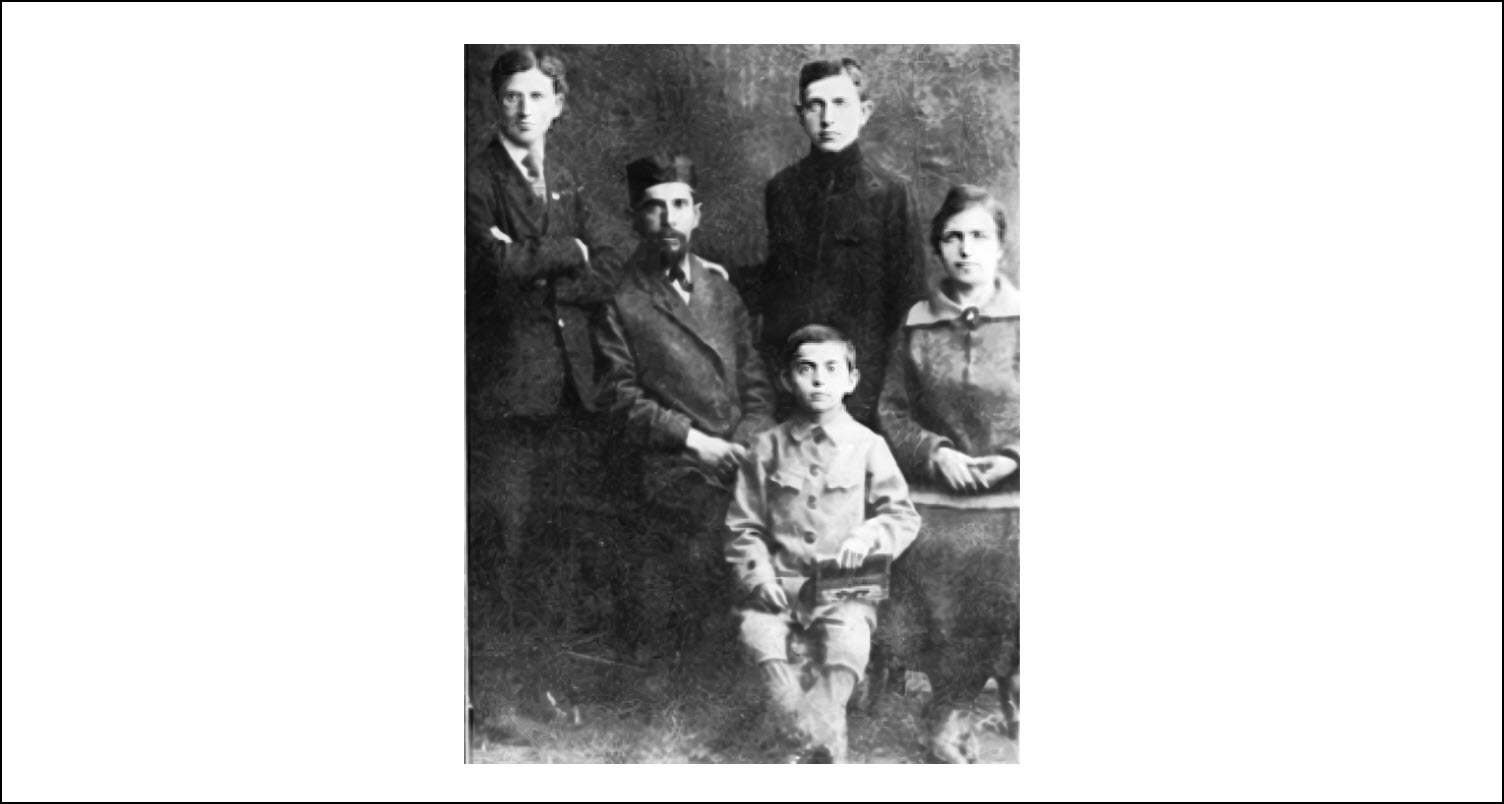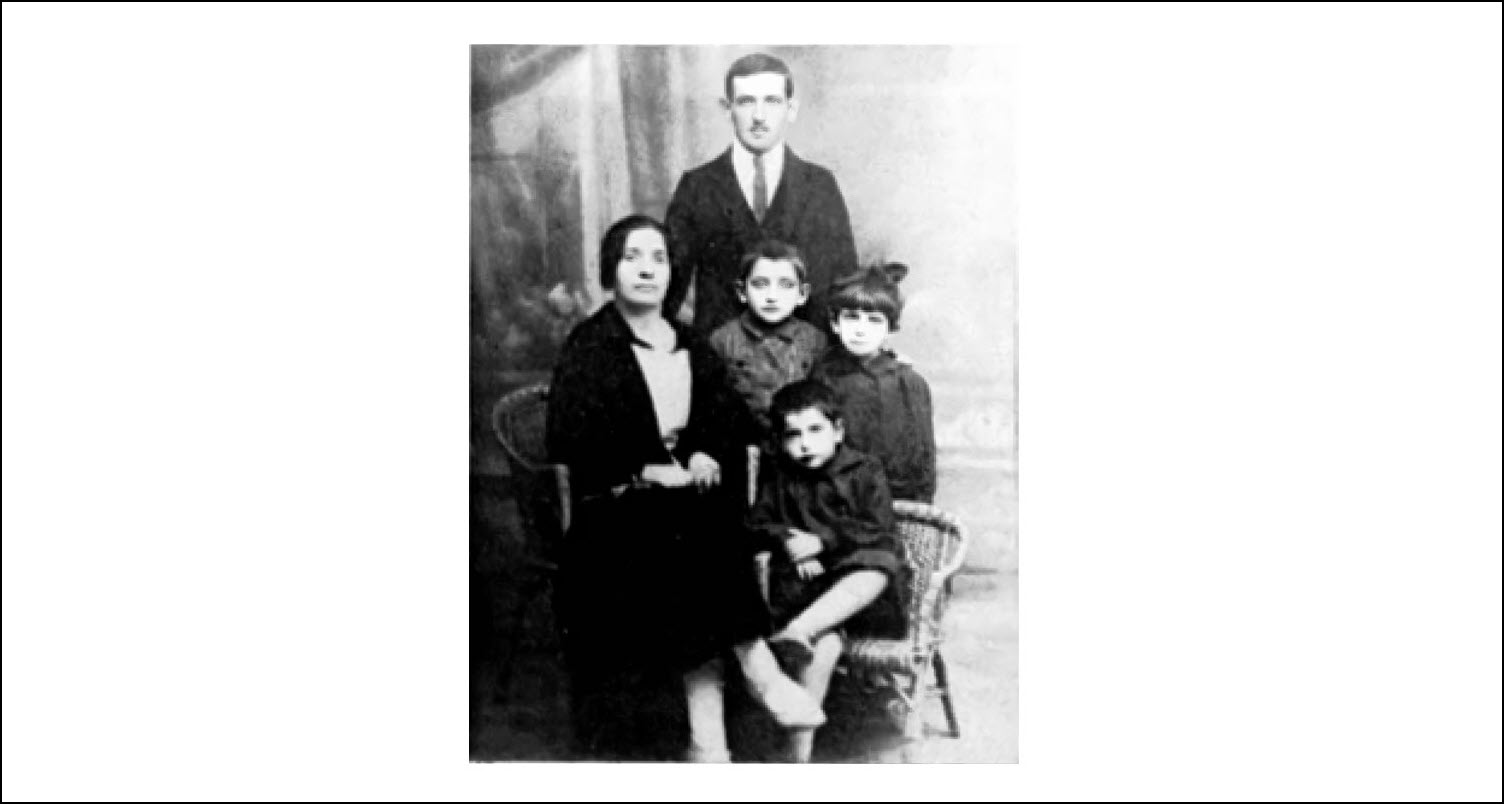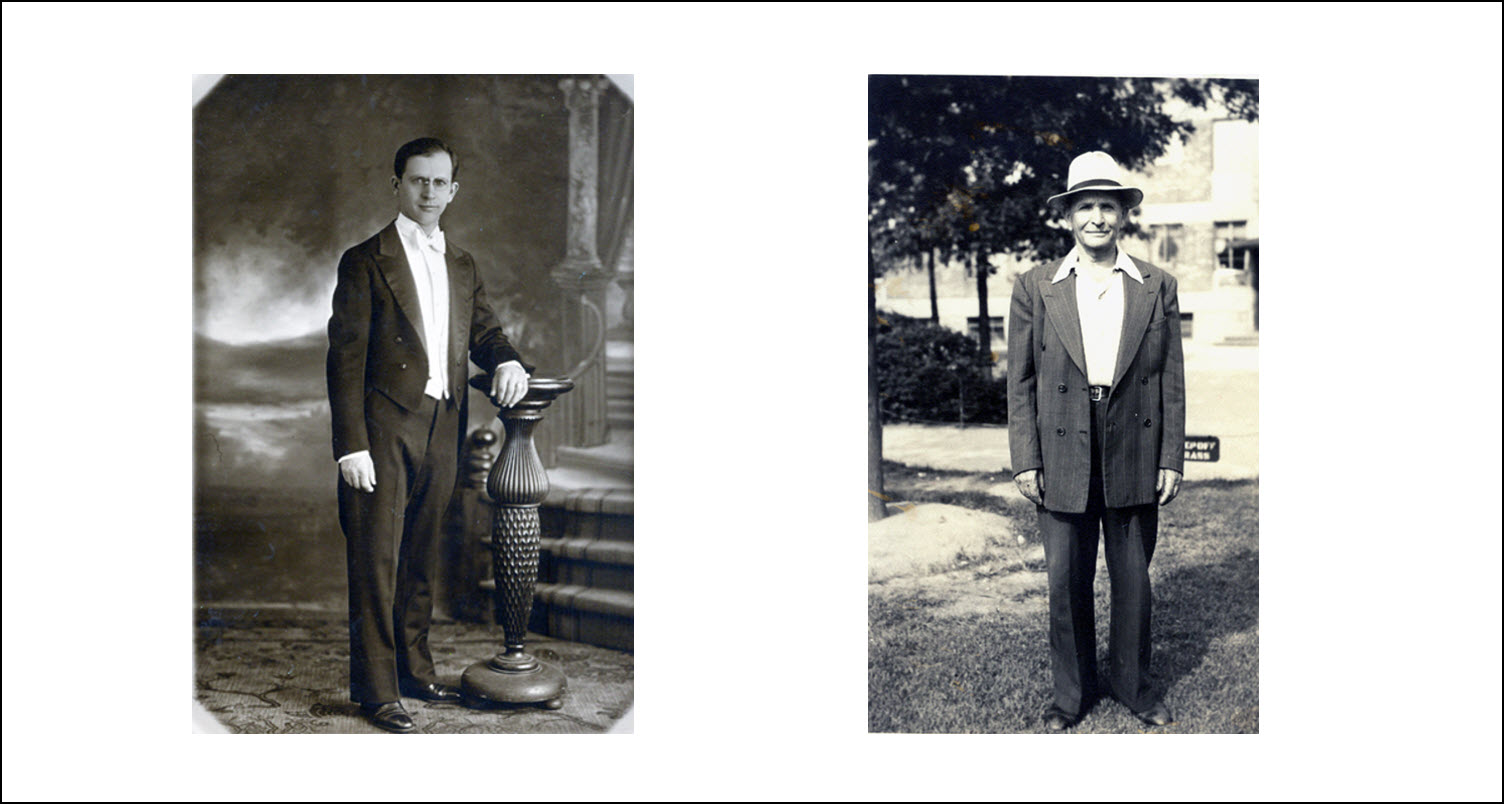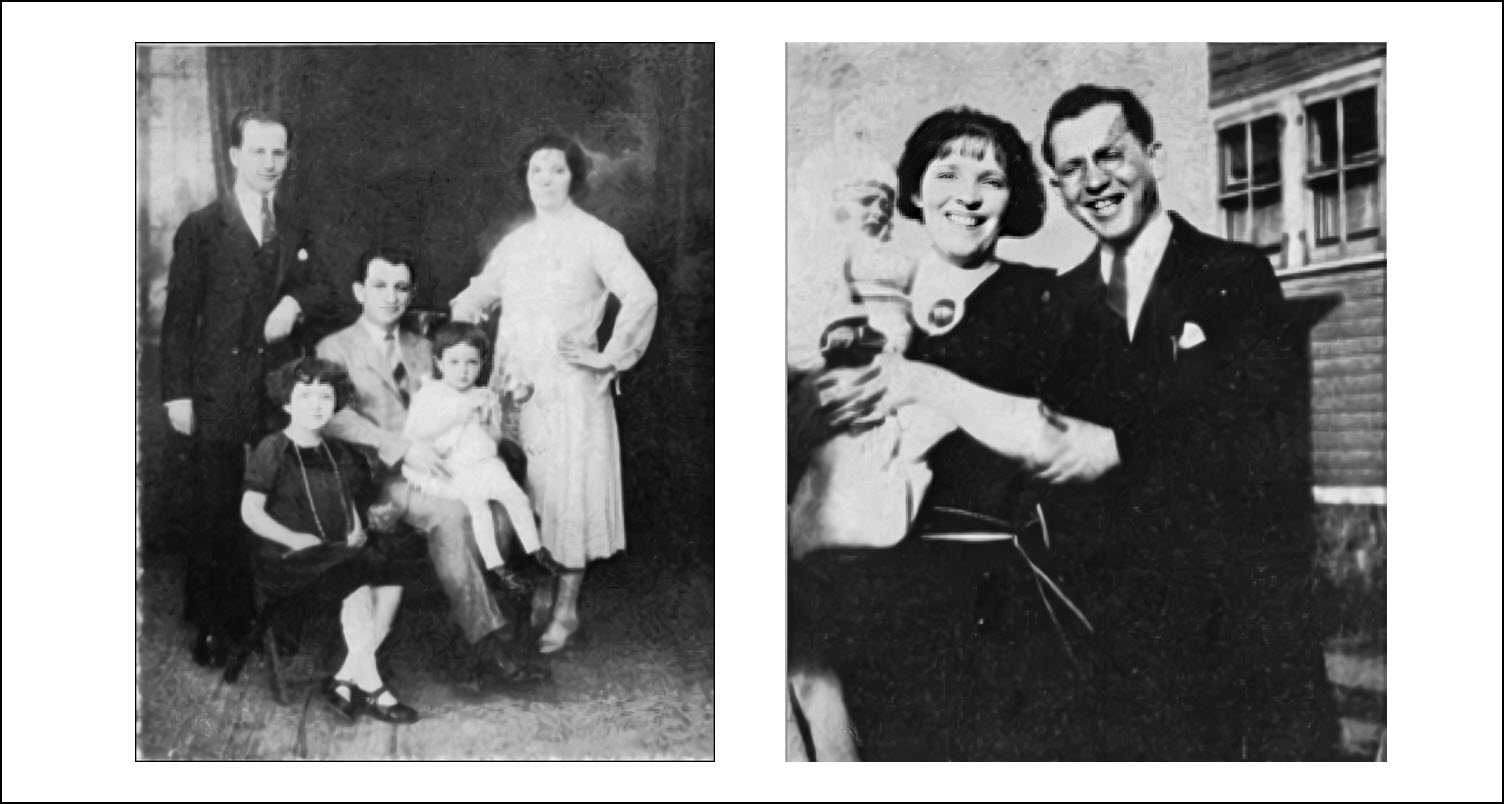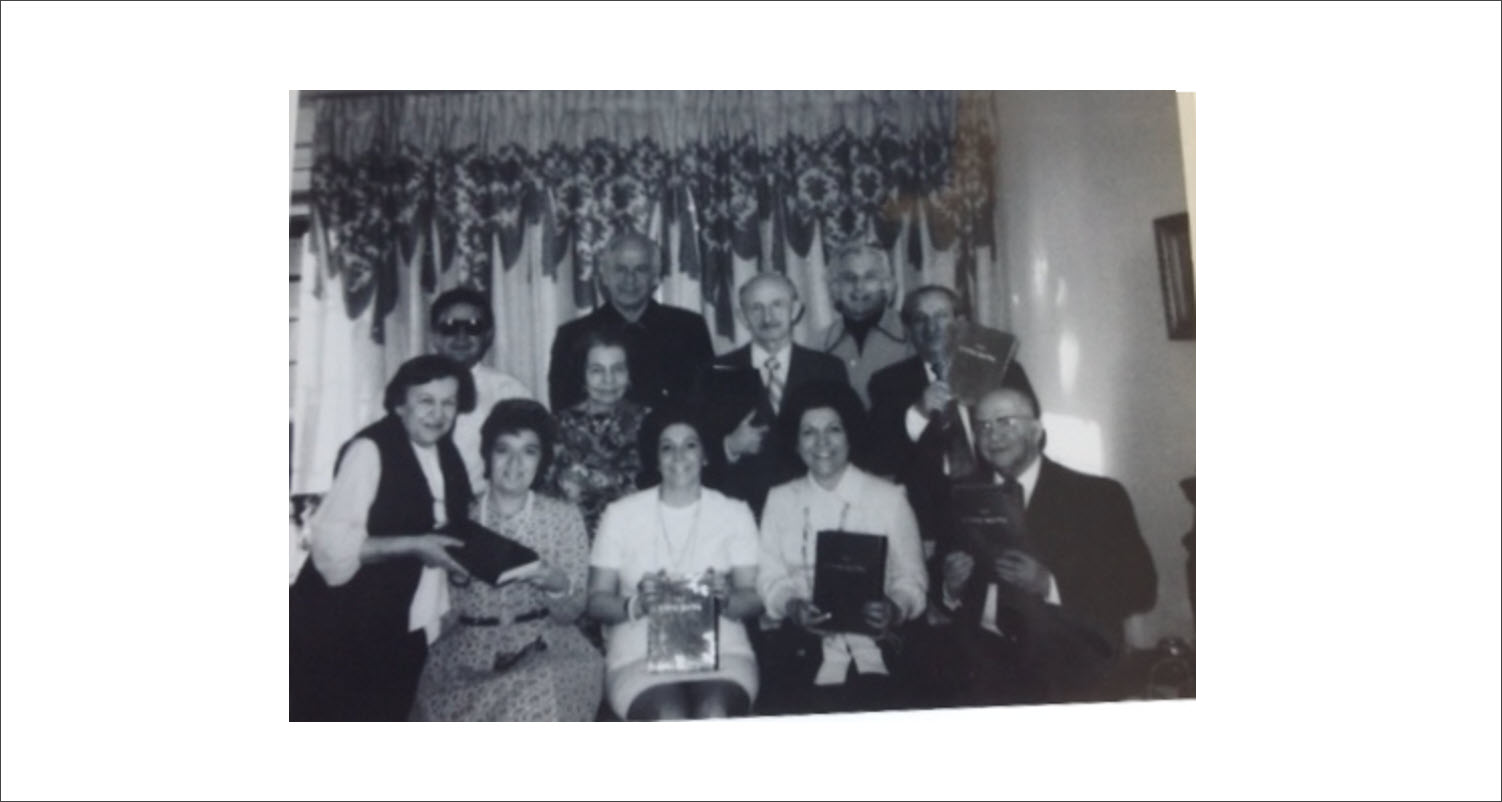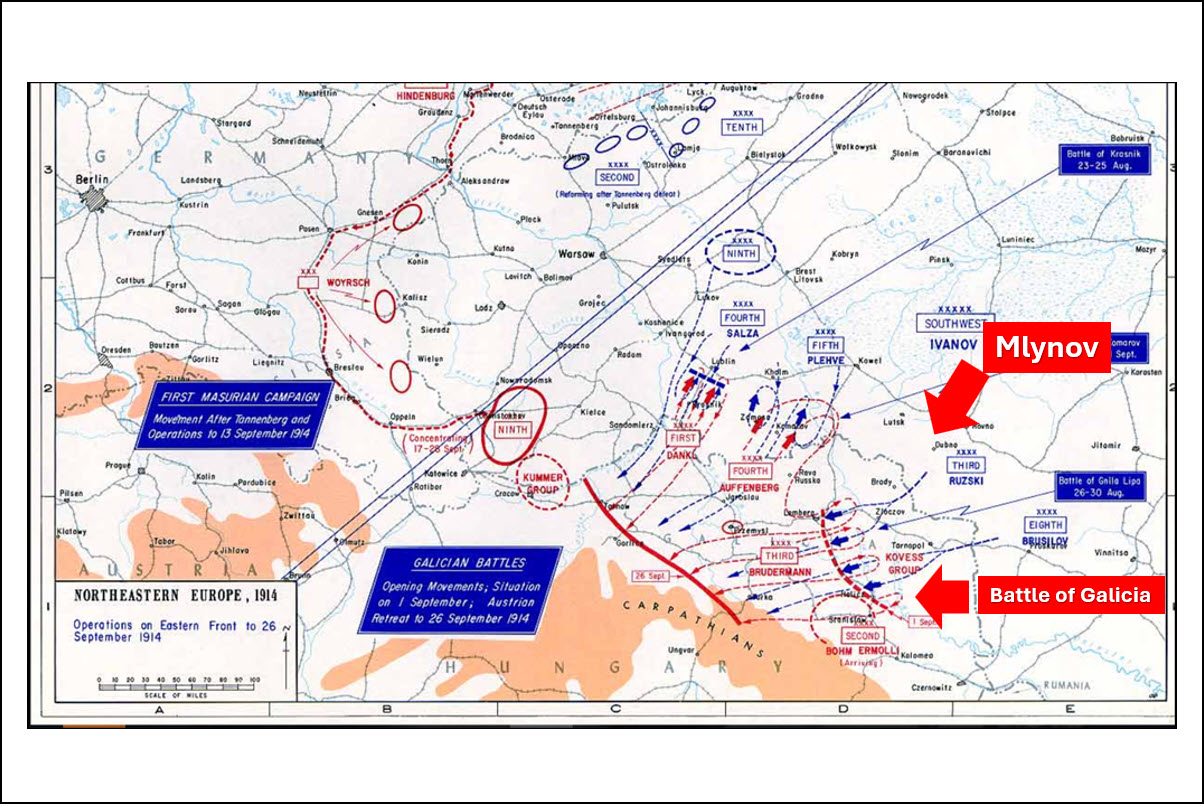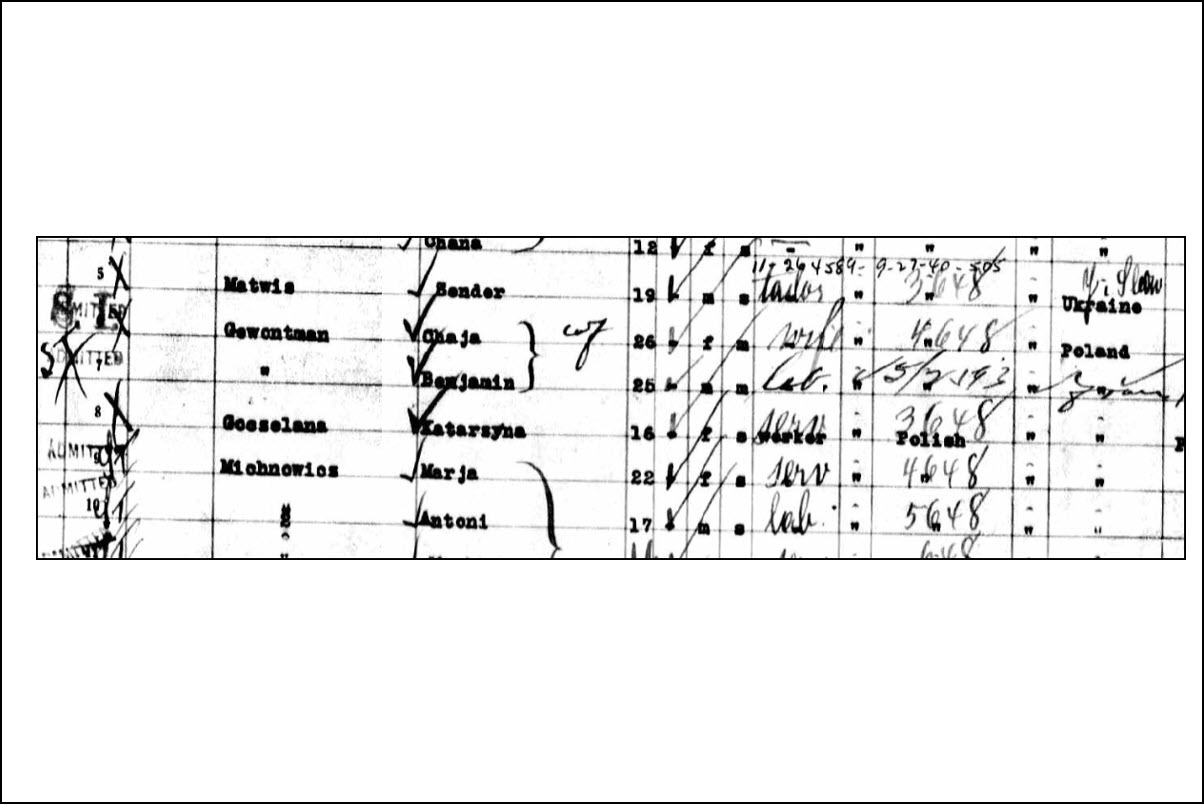-
Home
Home About Network
- History
Nostalgia and Memory The Polish Period I The Russian Period I WWI Interwar Poland WWII | Shoah 1944 Memorial Commemoration- People
Famous Descendants Families from Mlynov Ancestors By Birthdates- Memories
. The Goldberg Family Story from Mlynov

***
(Back to the beginning ...)
The Gelberg Family Story (continued)
As discussed in the overview, it seems possible, though not provable, that Labish Gelberg was the young orphan son of the man named Haim Leib who is listed in the "Gelbarg" household (#48) in the 1850 revision and in the "Gelberg" household (#54) in the 1858 revision. The 1858 records shows that the head of household, Haim Leib Gelberg, died in 1855 and left behind a young orphan son, "Freidel," who is living with his older first cousin. It seems possible that after Haim Leib passed away that his son Freidel was referred to in Yiddish as "Labishes" [meaning Leib's son] and simply became "Labish."[1]
Whatever his origins, Labish comes into focus in family memories when he was married off to Eta Leah, a daughter of Gershon and Shaina Bluma Schuchman who also appear in the 1858 census. Labish and Eta Leah were married by 1874 when their first child was born and eventually had seven children. Descendants include members of the Schuchman, Schechman and Sherman families.[2]
As was the case of other Mlynov families, three of the older children stayed behind in Europe when younger members of their family left for the US. The three who remained behind were Pinchus Gelberg (1874–1935), Esther (Gelberg) Malar (1888–~1942) and Chana Gittel (~1890–~1942). According to family oral traditions, Pinchus became an educated man, married Chaia Rive in Klevan, where he had a leather goods store and two sons. He was wealthy and visited his parents often. He died in 1935 and his wife and sons were later killed during WWII.
Esther Gelberg, for her part, married a man named Yussel (also "Josef") Malar and they had two children: David and Gissie Malar. All of the Malar family were killed in the Shoah except David who survived, got married in a displaced person camp and subsequently came to America and died at the age of 94 in 2004.
Labish and Eta's third child who remained in Europe, Chana Gittel, married a man named Yankel "Preziment," the proper pronunciation located recently on the back of a postcard in the family.[3] Chana Gittel and Yankel had three children. The family all died in the Holocaust as well.
Labish and Eta's other four children all made their way to the US and as a result we know much more about them. Those who came to the US were: Moishe (Morris) Goldberg (1875–1967), Chaya Gelberg (Ida Gevantman) (1893–1949), Sura ("Sorke") Gelberg (Sarah Spector) (1894–1941), and Gershon (Joseph/George) Goldberg (1896–1984).
***
The Gelberg Family Migration
Moishe Goldberg apparently was the first of Labish and Eta's children to make his way to the US in 1911. By the time Moishe left for the US in 1911, he already had four children with his wife Gitel (also "Gitla" and "Gussie") whose family name was Weitzer (or Weizer) and who lists a relative, possibly a brother or father, named Aron Weizer back in Mlynov on her 1921 passenger manifest.
"Mojshe Gilberg," as his name appears on his passenger manifest, left Hamburg on the SS President Grant and arrived in NY on Dec. 13, 1911. Like a number of other Mlynov husbands who came ahead of his family during this period, he would be separated from his wife and children during WWI for ten years and would be reunited with them only in 1921. His youngest son most likely had no memories of his father by the time they remet in 1921.
Also traveling on the same ship and listed only one page away on the manifest, was "Nussen" Gelberg, one of the three brothers from the other Gelberg family in Mlynov who were descended from Pinchus Meir Gelberg. He was traveling to the US with his oldest daughter Sima. It seems likely that Nussen Gelberg and Moishe Gelberg knew each other and in fact planned their passage together. Two of Nussen's brothers, and two sons, had already arrived in the US and had settled in Jersey City.
Moishe's passenger manifest also makes evident that other Goldberg cousins had already made their way to the US. Moishe's destination was a cousin in NY, whose name appears to be "Idel Goldberg" (Judel?), a person whom no one has yet been able to identify. Moishe's destination, which I couldn't decipher on my own, turned out to be 60 Orchard Street in the tenement district, as I learned from my 96-year-old collaborator, Edith Geller, who recalls visiting with the Krellin family at that address growing up.
During this time, two other close relatives of Moishe arrived in the US. Moishe's sister Sarah (Sura) Goldberg arrived in September 1913 and she was headed to the home address of her boyfriend's uncle. According to family accounts, Sarah was brought to the US with the help of her future husband, Samuel Spector, who met her briefly in Dubno before he left for the US, fell in love with her there, and made arrangements for Sarah to join him in the US. Upon her arrival, however, Sarah fell in love with another man. But then a dream of her father Labish set her straight and convinced her to marry Sam. They were married on New Years Eve 1918.
families.html#threebrothers Like other Mlynov immigrants who arrived before the WWI, Moishe and Sarah were separated from their family which was still back in Mlynov during this time.
***
The Evacuation of Mlynov
Back in Mlynov, the Gelberg family, like other families that experienced WWI, had to be evacuated from the town as fighting intensified on the Eastern front and got quite close to Mlynov. One of the few firsthand accounts of that evacuation was described later in life by Helen Lederer, whom I learned was a granddaughter of Labish and Eta Leah Gelberg.
Helen was born in 1903 in Mlynov, the oldest daughter of Moishe, the one who made his way to the States in 1911. Just think how frightening this evacuation must have been for Helen and her family with her father far away in the US. They must have wondered if they would ever see him again. Helen writes:
It was during the time of the first World War. A cold winter day, a burning frost, a deep snow. The Germans are getting closer to our town Mlyniv. All of us are taken out of our homes. The soldiers intrude into the synagogue sanctuary and pack us inside, like sardines. We are lying in great anxiety-not knowing what to expect. 2:00 a.m. An angry wind howls, like devils dancing. A banging is heard. Soldiers are standing with guns. They order everybody to go out into the street.
The soldiers have brought wagons, which are standing there: “Pack what you can on the wagons, and you—walk.” The horses can barely drag themselves in the deep snow. Women and children shlep after the wagons on the way to Varkevetsh. Everybody’s hands are busy grabbing provisions for the children to eat. My mother, Gitl-Pesye Khoylye’s, has four small, crying children shlepping along with her. Also my Aunt Soreke-Pesye Khoylye’s is going, carrying something in both hands, with her little girl Dvoyrele. After having walked a few versts, Soreke looked around – the child is not there!... She screamed; there was a commotion; Soreke ran back. The soldiers with their rifles drove on and said that the Austrians throw their searchlights on us; they will see her walking, and they will shoot. Soreke crept back and found Dvoyrele in the snow, passed out!
It is day. We get to Varkevetsh. We come to our relative Nakhman Leyb. There is not even room for a pin. There is my grandfather, Leybush Gershon’s, both his daughters Chana-Gitl and Khaye, and other refugees—there is no place for us. And there is no place to go to. Frozen, tired. . . at last we see a cover over the cellar-- the only empty spot. We put a feather bed on it, and we lay down, exhausted.
Helen and her family probably walked forty miles before they finally were helped in Rowno (Rivne) by a gentile who put them up for four months. She continues:
And this angel in a human image takes all of us under his protection. Namely, he took us to his home through an underground door—so that his antisemitic wife would not see us. Over there we stretched out our tired bones. Coming out into the street, we learned about the Joint Help Committee from America; they gave out packages of food to every refugee. So my mother stood in line and, thank God, we now had what to eat. Basye-Khaye Malke’s suffered labor pains, and after much anguish she gave birth to a child in the cellar. The coachman kept us four months and provided for us. His name will always be on my lips.
After a number of months, Helen's family returned to Mlynov, which by the end of the War became part of the recreated Poland.
***
The Goldberg Migration Restarts
By 1921, Helen's family had managed to secure a visa to leave for the United States to join her father Moishe. They participated in what was the third wave of Mlynov immigrants to the US between 1920–1924 and which also included other Mlynov immigrant families, including the Dembs, Lerners and Marders, who were also rejoining husbands and fathers in Baltimore who had also been separated by the War.
They arrived in New York on April 2, 1921, traveling on the SS Rotterdam from the city of the same name. Moishe’s wife, Gitla (Gitel), age 42 at the time, was accompanied by Moishe’s youngest brother, “Gerszon,” age 21, who presumably assisted his sister-in-law with the children: “Chirleja,” age 16, (soon to be Helen Dishowitz and later Helen Lederer), Sura, age 13 (later to be Sarah Lewbel), Gerschon (later Jack), age 8, and Avrum, age 11, who later married his first cousin Frances, daughter of Morris’s sister, Sarah Spector. They were all headed to Moishe’s home at 24 Ludlow Street in NYC.
A few months after Moshe’s wife and children arrived in April 1921, another of Moishe’s sisters, Chaya (Ida Goldberg) Gevantman arrived with her husband Benjamin. They landed in New York on July 17, 1921, traveling from Danzig on the SS Gdansk. Ida was the fourth of the Labish and Eta’s children to arrive in the States. The Gevantmans listed “Trubitz” as their last permanent residence in Poland, likely Torhovytsia, Ukraine today, which is only 17 km from Mlynov and a 30 minute ride by car today.
***
Chaya (Ida Gevantman) was apparently pregnant on the passage to the US, and her son Hyman (Lewis) Gevantman was born a month and a half after they arrived on Sept. 12, 1921. He was named “Labish Chaim” after his grandfather, as I learned from his daughter, Sandra (Gevantman) Zylberman, whom I tracked down and met by phone.
In any case, who could have anticipated that this particular grandson of Labish, who as an adult styled himself as “L. H. Gevantman,” would become a scientist and work on the atom bomb as part of the Manhattan Project. His daughter Sandra recently told me that as a young adult he had left Baltimore as soon as he could, both to escape the small knit Jewish community but also in quest of becoming a scientist, a project that required downplaying one’s Jewishness in a community that was still antisemitic. He had done his undergrad at Johns Hopkins University and then left Baltimore to do his PhD at Notre Dame. He would later be assigned as a US representative to the International Atomic Energy commission in Vienna in the early 1960’s, a period of time in the family’s life that Sandra remembers fondly as a young girl.
The Gevantmans did not remain in New York long after they arrived. By March 1924, they were drawn to Baltimore where a little Mlynov had developed and where Ben Gevantman signed his Petition for Naturalization. The family took up residence at 4804 Pimlico Road in the Northeast Baltimore where Baltimore Jews had been migrating as they left the poverty and crowdedness of East Baltimore.
The Goldberg Famly, 1925–s1930
By 1925, four of the seven children of Labish and Eta (Schuchman) Goldberg had arrived in the US and settled down. Moishe, by now Morris, was joined by his wife Gitel and his children in 1921 and they settled in Manhattan where it appears Morris had a grocery business. Their oldest daughter Helen Dishowitz [later Helen Lederer] had married and started a family of her own. Their second daughter Sarah would marry Herbert Lewbel in 1929.
Morris’s sister, Sara (Gelberg) Spector, who had arrived in 1912–1913 and married Samuel Spector by 1918, had four children during the 1920s including Edith who has been my interlocutor for this family story. By 1930, the family was living in Brooklyn. Ida (Gelberg) Gevantman and her husband Benjamin, as noted above, had migrated to Baltimore by 1927, where their second son Joseph was born.
Moishe’s youngest brother, Gershon Joe (now George) Goldberg, who had arrived with Moishe’s wife in 1921, would marry Silka (Sylvia) Barditch, a transplant from Baltimore, in August 1927.
Sylvia’s family had settled in Baltimore, where her father and uncle had settled before she arrived with her mother and siblings. They moved up to New York after a family tragedy made Baltimore no longer bearable. Photos of Sylvia Goldberg, as she was subsequently called, appear throughout the Mlynov-Muravica Memorial book and she became the only woman on the Book Committee that produced the Memorial edition. Sylvia also contributed an essay to the Memorial book about a wedding between a man from Lutsk and a woman from Mlynov. I was surprised to learn that Sylvia was not from Mlynov at all, but was from Lutsk, a town that is 36 km from Mlynov or 36 minutes driving today. Why had she become an editor of the Mlynov Memorial book? I leave the mystery of Sylvia’s involvement in the Mlynov project for a separate essay that recovers Sylvia’s own special connection to Mlynov and explains her abiding interest in the town and its history.
You can read download an essay about Sylvia or about the Goldberg family from Mlynov or return to the beginning .
Notes
[1] Since Mlynov was a small town, residents often did not use formal surnames. There are many examples in the Mlynov Memorial book where an individual is referred to instead in Yiddish with a possessive form of the father, mother, or father-in-law. Yiddish creates the possessive by adding an "s" sound, like the English "apostrophe s." For example, the children of Aaron Hirsch are referred to as belonging to the "Ahrelas" family, meaning son or daughter of Aharon. Similarly "Gitlas" is used to mean "daughter of Gitla," and "Tobishe" is used use to designate "son of Toba." It seems possible that Leib's orphan son became known as "Leibishe."
This Gelbarg household went through a major transformation from 1850 to 1858. In 1850, Haim-Leib is 42 and head of the family. He is married to a woman named Khina and they have three daughters (Etya, age 15, Eidlya, age 12, and Tsivya age 7). The 1850 census also indicates that Haim-Leib's brother recently died and that his brother's son, Mordko, age 10, is living in the household.
Everything changed by 1858. As that record makes evident, Haim-Leib passed away in 1855 at the age of 49. When he died, he left behind a young son named Freidel who was born in 1850 and was 5-years old when his father died. Haim-Leib's wife, Khina, and his three daughters, who were in the household in the 1850 census are no longer listed. We don't know what became of them. Perhaps after Haim-Leib's death, Khina returned to her family with her daughters or married someone else. In any case, in 1858 the son Freidel is living in the household as an orphan along with his first cousin, Mordko, who is now 25 years old. It is this orphan son, Freidel, who perhaps was known as "Leibishe" son of Leib. ↩
[2] As discussed in the Sherman family story, Ezra and Yechiel's maternal grandmother, Hannah, was a Schuchman and was the sister of Eta Leah (Schuchman) who married Labish Gelberg. ↩
[3] I want to thank Joyce Jandorf, a Schuchman descendant, who located the proper pronunciation of Yankel's last name. The name was incorrectly transcribed as "Frumiut" in Sokolsky version of the Mlynov Memorial Book translation(p. 108). ↩
***
Compiled by Howard I. Schwartz
Updated: July 2024
Copyright © 2021 Howard I. Schwartz, PhD
Webpage Design by Howard I. Schwartz
Want to search for more information: JewishGen Home Page
Want to look at other Town pages: KehilaLinks Home Page
This page is hosted at no cost to the public by JewishGen, Inc., a non-profit corporation. If it has been useful to you, or if you are moved by the effort to preserve the memory of our lost communities, your JewishGen-erosity would be deeply appreciated.
- History

